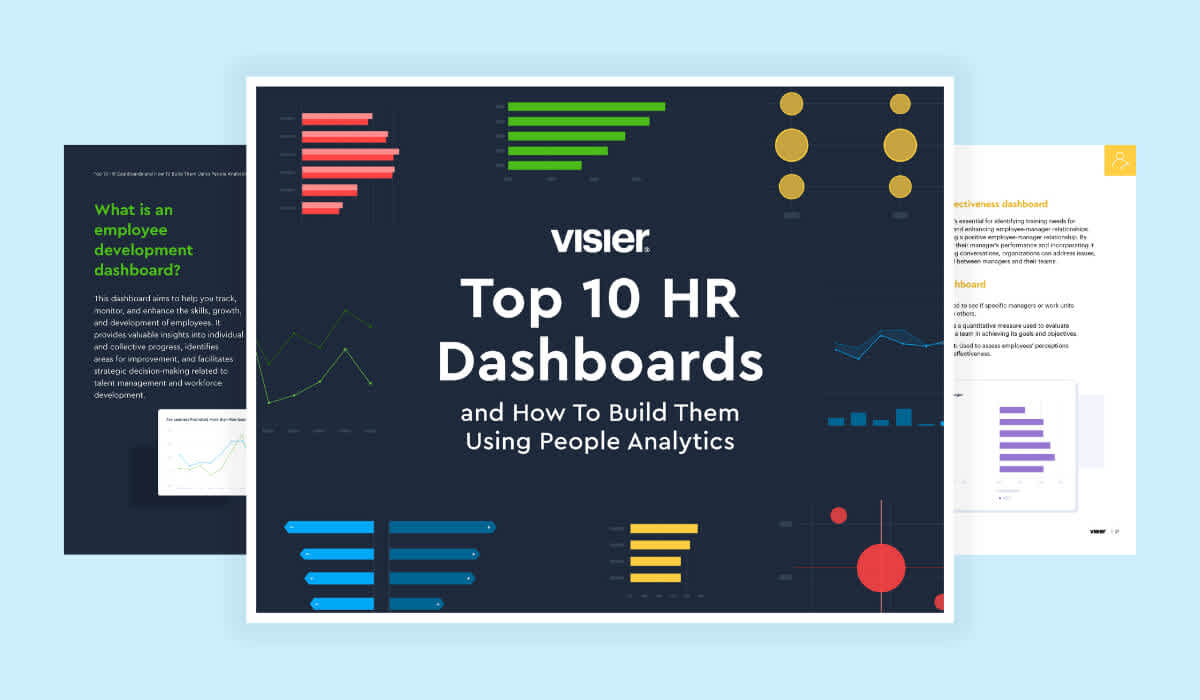A Guide to HR Data Insights: The What, Why, and Process
HR data insights provide actionable information that help you chart a path forward for your business. Learn more here.

Data is a foundational element for business strategies. But raw information can only take you so far. Data insights provide a deep understanding of the information at hand, helping you make better decisions and reach business goals.
What are data insights?
Data insights are valuable and actionable information about a certain situation. They’re a deep understanding of that situation that you and your team gain from data through analysis, interpretation, and visualization.
Data insights are powerful in any context and perhaps more so in human resource management. HR data insights mean gaining understanding and clarity regarding different aspects of one’s workforce. They can guide HR in creating better strategies to improve things like engagement, retention, or productivity.

Taking it one step further, you can look at people data insights. People data focuses on data regarding the people in your organization—employees, freelancers, gig workers, and more.
It takes into account aspects like training, productivity, performance, and skills. By leveraging people data insights, you can improve the employee experience, identify growth areas for your organization, and reach business goals.
Data vs. analytics vs. insights
Data, analytics, and insights are related concepts and flow naturally from one another.
Data is the unprocessed information you collect. You can organize it in databases, spreadsheets, or other files, or store it randomly in various storage units.
Analytics means analyzing the data. It can take various forms, depending on the data you’re analyzing. For instance, if you want to gain a deeper understanding of your people data, people analytics will be the best choice. For those trying to find future patterns, predictive analytics might be a better option.
Finally, insights are the information you find after the analysis process. They help you see patterns and trends which will allow you to improve your business processes.
The main goal of data insights
Data is a force that can drive your business forward. Used correctly, it can show you which of your initiatives are working and which aren’t.
It can help you see trends, both positive and negative, and show you the “why” behind them. But raw data is hardly ever useful. To get all these benefits, you need data insights.
By analyzing data and gathering powerful insights, you can optimize business processes and gain a better understanding of your workforce. With data insights, HR can harness the power of data, make evidence-based decisions, and create proactive strategies.
4 benefits of data-driven insights
Focusing on data-driven insights helps you make more evidence-based decisions in your business and create strategies that truly work. Here are some more ways in which data insights will help.
Optimized resource allocation. Data insights allow companies to allocate their resources as best as possible. By looking at various trends and patterns, you’ll know exactly where and when you need more skills or resources, enhancing productivity and performance.
Strategic workforce planning. HR analytics are often the first step towards strategic workforce planning. The data-driven insights you’ll gain will help you identify skill needs and gaps, and align workforce planning with business objectives.
Improved diversity and inclusion strategies. D&I is more important than ever. Fostering a diverse and inclusive culture can often feel challenging, though. Inclusion metrics are the place to start, but to create real change, you’ll need data insights. These will show you the areas where you can improve and help you implement strategies that will create lasting change.
Adaptability and continuous improvement. Change is inevitable for any business. To succeed, you need to leverage that change to your advantage and continuously improve. Data-driven insights, especially when they’re the results of predictive analytics, can show you future trends. They allow you to create a proactive business strategy, and stay agile and responsive to the changing market conditions.

Data insights examples
Data insights will look different from department to department and industry to industry. Here are a few examples of HR data insights.
Lowering turnover
Company X wants to understand its turnover rates. They notice there’s a slow but steady increase in voluntary turnover, but they don’t know why this is.
They begin by analyzing several HR metrics, looking at things like absenteeism, engagement, or compensation. The team notices that some employees had been disengaged and missing work without a good reason. These employees hadn’t been included in training programs in a long time, despite their interest in learning new skills.
Armed with these insights, the company can focus on creating better retention strategies that include more learning and development and growth opportunities for those interested.
Skills gap analysis
Analyzing skills is a must if you want to stay one step ahead and create a productive workforce. But if you’re only looking at the skills you have in your company without looking at the bigger context, the process won’t be very helpful.
Company B’s employees have all the right skills that the company needs right now. But management knows an expansion is more than likely, so they need to be prepared. Their skills analysis reveals no employees have advanced statistical knowledge, and only a few know the basics.
These insights can help HR create targeted learning and development programs that will help those with basic statistical knowledge reach an advanced level. Later on, they may create a mentorship program in which those who have reached an advanced level can mentor beginners.
If needed, they could also focus their talent acquisition strategies on finding more qualified candidates. This will help to create a workforce that is aligned with the company’s goals and ready to meet the ever-evolving business demands.
How to find data insights at your company
Insights come with incredible benefits. But how do you find them? Here are some tips to help you get started.
1. Start with your goals
What questions are you hoping that data insights will answer? What are your goals? This step will set the tone for the entire process. It will show which data you need to focus on and what type of analytics you need.
Be as specific as you can and don’t be afraid to ask for help. This shouldn’t be a one-person job. And often, you’ll need to seek answers in other departments as well. Collaborate with stakeholders to see what are the most pressing problems and define your goals carefully.
2. Collect the data
Once you know your goals, you should have a good idea of the data you need. You can now go to the data collection phase. Don’t worry about processing it just yet. The goal here is to gather all the information you need, regardless of its format.
3. Check and transform the data
The raw data you collected in the previous step will be hard to use. Before you can think of analytics or visualization, you need to make sure everything is correct, checking for faulty or missing information.
Don’t forget about data transformation. Data from different sources will often be in different formats. This will make it hard to use for both humans and machines, so bring it to a unified format first.
4. Choose your analytical tools
To find insights, you must first use analytics. Decide what type of analytics you’ll use. This will help you find the right HR analytics tools so that you can get the results you want right from the start.
You may want a comprehensive people analytics solution or go for something more complex, like using R or Python. Keep in mind some tools have a steeper learning curve than others. For instance, a programming language like R is great for statistical analysis, but it will require a lot of technical and statistical knowledge.

5. Analyze and interpret data
Using the tools and the analytics techniques you chose previously, you can now analyze and interpret your data. Explore relationships and find patterns and trends within your datasets to answer the questions defined during the first step.
Depending on your business and goals, you may need to involve various stakeholders here. For instance, if you want to improve retention, HR will be the first to work with the data and gather insights. But you may also need to involve management and other stakeholders to find the best insights possible.
6. Use data visualization
This step is not mandatory, but it will make your life significantly easier. For most people, it will be harder to spot patterns in endless rows of numbers.
Data visualization tools, such as HR dashboards, will present your data through graphs, charts, and other visual elements, making it more compelling and intuitive to analyze.
7. Monitor and improve as needed
Finding data insights is not a one-time process. Seek feedback from stakeholders and find what’s working well and what could be improved.
You may need to use different tools or a different type of analytics. Whatever it is, keep an open mind and continuously improve your processes.
Data insights bring clarity and knowledge to your business. They help you leverage analytics and by extension data in a way that benefits both you and your employees.
Data insights are useful for anyone in the company. From the HR department to sales and management, everyone can use insights to improve their decision-making process, set better goals, and create a strong workforce.
On the Outsmart blog, we write about people analytics and HR technology topics like how bad data can’t stop good people analytics, the benefits of augmented analytics, and everything you need to know about HR data sources and HR data connectors. We also report on trending topics like artificial intelligence, using generative AI in HR, and how skills are rapidly evolving, and advise on people data best practices like how to ingest people data and business data, how to turn source data into insights, and reports vs. analytics. But if you really want to know the bread and butter of Visier, read our post about the benefits of people analytics.



